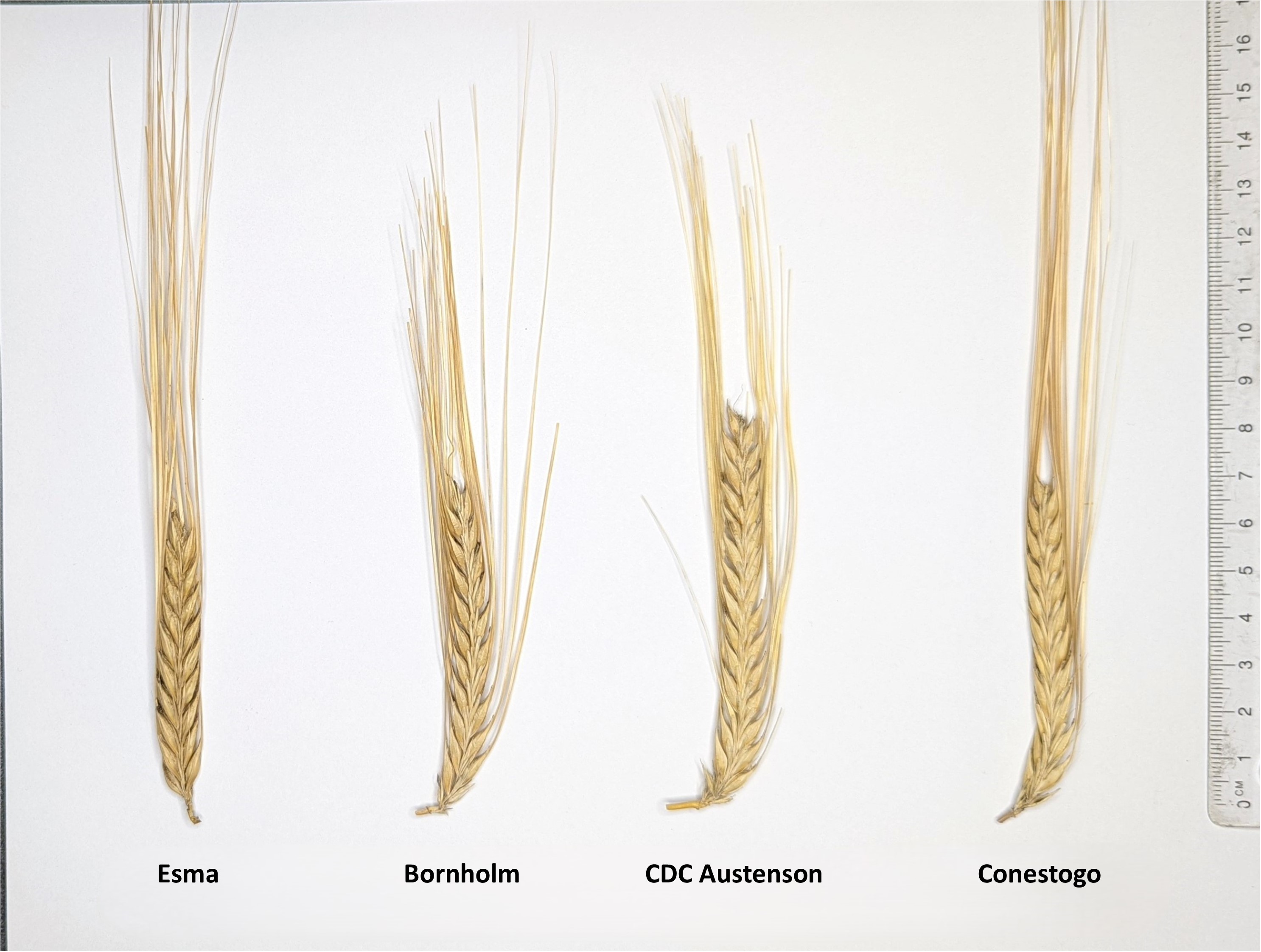Esma
| Denomination: | 'Esma' |
|---|---|
| Botanical Name: | Hordeum vulgare |
| Applicant/Holder: |
Ackermann Saatzucht GmbH & Co. KG Marienhofstra�e 13 Irlbach D-94342 Germany |
| Breeder: |
Ackermann Saatzucht GmbH & Co. KG, Irlbach, Germany |
| Agent in Canada: |
SeCan Association 400-300 Terry Fox Drive Kanata, Ontario K2K 0E3 Canada Tel: 613-592-8600 ext.223 |
| Application Date: | 2020-02-03 |
| Provisional Protection:: | 2020-02-03 |
| Application Number: | 20-10087 |
Variety Description
Varieties used for comparison: 'Bornholm', 'CDC Austenson' and 'Conestogo'
Summary: The plants of 'Esma' head earlier than the plants of 'CDC Austenson'. The sterile spikelet of 'Esma' has a rudimentary development whereas those of the reference varieties are fully developed.
Description:
YOUNG PLANT: erect to semi-erect growth habit at tillering, absent or very sparse pubescence on lower leaf sheaths
PLANT: two row, spring barley
FLAG LEAF: very weak to weak intensity of anthocyanin colouration on auricles
SPIKE: emerges mid-season, absent or very weak glaucosity at end of anthesis, semi-erect to horizontal attitude, cup to platform shaped collar, lax to medium density
STERILE SPIKELET: rudimentary development
LEMMA AWNS: medium intensity of anthocyanin colouration of tips, longer than spike
KERNEL: short to long rachilla hairs, husk present, hairless ventral furrow
Origin & Breeding History: 'Esma' (experimental designation AC 10/508/24) was developed using a double haploid technique. It originated from the cross between AC 05/565/146, as the female parent, and 'Explorer', as the male parent, conducted in 2009 in the County of Straubing in Bavaria, Germany with double haploids being produced from the F1 generation in Irlbach, Germany in 2009. From 2010 to 2011, the variety was advanced with selections made based on disease resistance, lodging resistance, yield, maturity and malt quality. Fifty single plants at the DH3 generation were used to establish breeder seed in 2012 to 2013.
Tests & Trials: The comparative trials for 'Esma' were conducted in Oak Bluff, Manitoba during the 2021 and 2023 growing seasons. There were 4 replicates per variety arranged in an RCB design. Each plot was 3.25 square metres and consisted of four 4.5 m long rows spaced 0.18 m apart. The seeding density was 307 seeds per metre squared resulting in approximately 4000 plants per variety per year. Measured characteristics were based on 20 measurements per variety per year.
Comparison table for 'Esma' with reference varieties 'Bornholm', 'CDC Austenson' and 'Conestogo'
Time of spike emergence (number of days from planting to when the first spikelet is visible on 50% of the spikes)
| 'Esma' | 'Bornholm' | 'CDC Austenson' | 'Conestogo' | |
|---|---|---|---|---|
| mean 2021 | 51 | 51 | 53 | 51 |
| mean 2023 | 46 | 43 | 48 | 43 |
Click on image for larger view

Barley: 'Esma' (left) with reference varieties 'Bornholm' (centre left), 'CDC Austenson' (centre right) and 'Conestogo' (right)
Click on image for larger view

Barley: 'Esma' (left) with reference varieties 'Bornholm' (centre left), 'CDC Austenson' (centre right) and 'Conestogo' (right)
- Date modified: